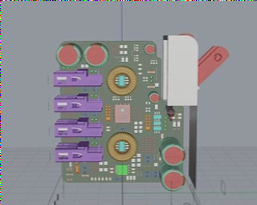Zero-ohm Resistor: A Versatile Component in PCB Design
- Overview: A zero-ohm resistor, also known as a jumper resistor, has a nominal resistance value close to zero ohms, making it a valuable component in PCB design.
- Types: Zero-ohm resistors are available in axial lead and surface-mount configurations.
Functions and Applications
1. Debugging and Compatibility
In PCB design, zero-ohm resistors help address compatibility issues by allowing engineers to select between different functions on a circuit. By soldering the resistor on the desired path, engineers can choose which module to activate.

2. Used as Jumpers
Zero-ohm resistors can replace jump wires, reducing wiring complexity and improving aesthetics in PCB layouts.
3. Bridging Circuits During Routing
These resistors help establish connections on densely packed PCBs without adding extra layers, reducing production costs.
4. Reserved for Debugging
Engineers use zero-ohm resistors as temporary placeholders during testing when circuit parameters are uncertain.
5. Measuring Circuit Power Consumption
Placing a zero-ohm resistor in series with the power supply aids in measuring current consumption accurately for power calculations.

6. Acting as Capacitors or Inductors
At high frequencies, zero-ohm resistors, along with external circuit characteristics, can function as small capacitors or inductors to address EMC issues.
7. Serving as Fuses for Overcurrent Protection
Zero-ohm resistors act as fuses during overcurrent events, disconnecting the circuit to prevent severe damage.
8. Single-Point Grounding
Zero-ohm resistors are used for single-point grounding between analog and digital grounds in PCB layouts.
Benefits of Using Zero-Ohm Resistors in Mixed Signal Circuits
- Zero-ohm resistors can connect separate grounds in mixed signal circuits, preventing issues like floating ground and static charge accumulation.
- They are an effective alternative to ferrite beads, capacitors, and inductors for addressing ground plane split disruptions.
- Zero-ohm resistors can be used in current loops for bypassing, reducing signal interference.
- They are soldered into circuits for configuration settings, similar to jumpers or DIP switches.
- Zero-ohm resistors help in noise suppression by attenuating loop currents across various frequency bands.
Zero-Ohm Resistors vs. Wires: Understanding the Difference
Zero-ohm resistors offer a range of capabilities beyond simple circuit bridging, making them more convenient for manufacturing in surface mount technology.
Accuracy and Current Handling Capacity
Zero-ohm resistors come in various accuracy ratings and package sizes, influencing their size and form factor.
The current capacity of a zero-ohm resistor depends on its rated power and the package size.
Calculating Rated Current for Different Package Sizes
- 0402 1/16W: I = 1.118A
- 0603 1/8W: I = 1.58A
- 0805 1/4W: I = 2.236A
The current capacity is also influenced by the resistor’s heat dissipation on the PCB.




